 U.S.Army Signal Corps
Northwest Europe WWII
U.S.Army Signal Corps
Northwest Europe WWII
|
Cold + Wet = Cold
Injuries: Frostbite & Trench Foot
"Many a soldier laughed at the idea that he should change his socks when he got his feet wet. But on the western front in the winter of 1944 trench foot became a grave threat to the health and efficiency of the troops. At General Eisenhower's urgent request (to the Signal Corps) for a training film on the subject, combat cameramen in the field shot films concerning soldiers with bad cases of trench foot. The Medical Corps added instructions on prevention. Trench Foot, a useful example of a film bulletin, was rushed to completion in the record time of six weeks." From: The Signal Corps: the Outcome (mid-1943 through 1945) by George Raynor Thompson & Dixie R. Harris, pp. 549 - 550. |
|
|
What Signalmen did that
put them at risk for cold injury
The exact
units or Signalmen are not identified. Felix
served in areas near these under similar
conditions and illustrate
how Felix could have suffered cold injuries
|
|
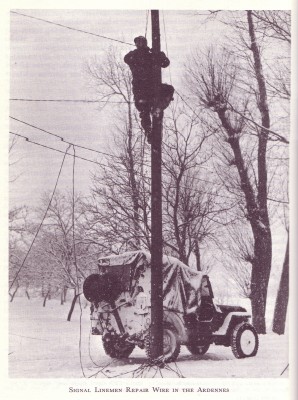 Photo from: The Signal Corps: The Outcome (Mid-1943 through 1945), p. 160. CAPTION: Signal lineman repairs wire in the Ardennes. |
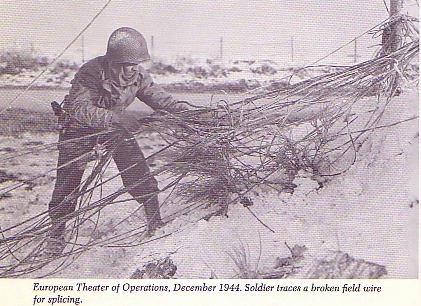 U.S. Army photo from: The story of the U.S. Army Signal Corps between pp. 114 & 115. CAPTION: European Theatre of Operations, December, 1944. Soldier traces a broken field wire for splicing. |
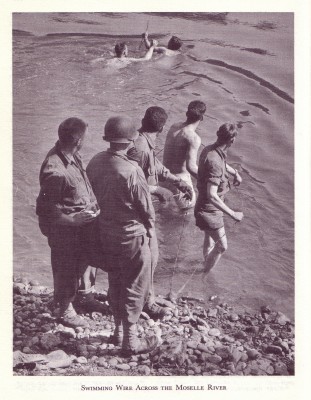 Photo from: The Signal Corps: The Outcome (Mid-1943 through 1945), p. 132. CAPTION: Swimming wire across the Moselle (River in France). |
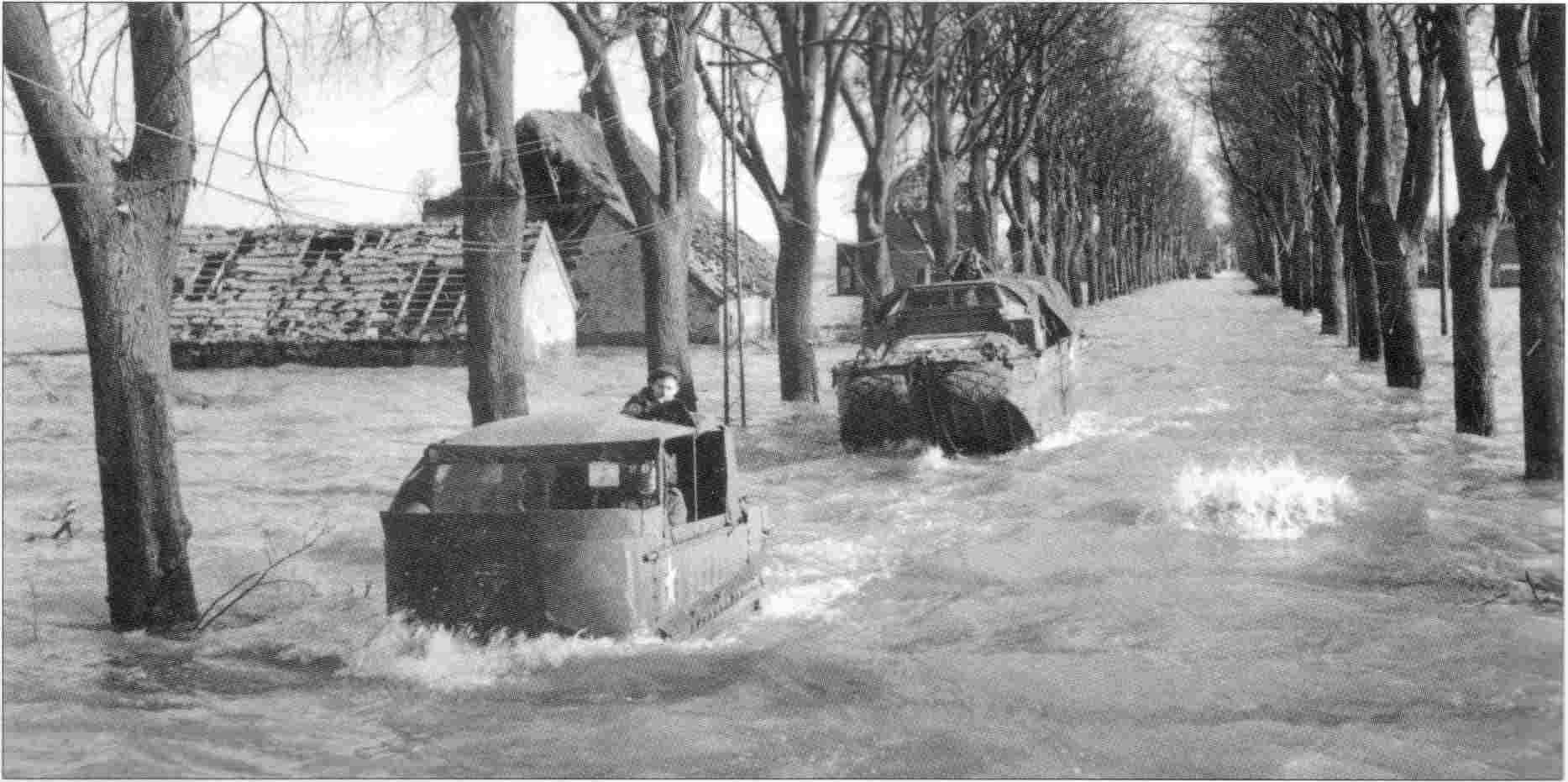 Imperial War Museum photo from The Rhineland 1945: the final push into Germany (Praeger illustration military history), Ford, Ken, 2004, Osprey Publishing, p. 48. Early February, 1945, in the Netherlands along the Nijmegen-Cleve road near the German border town of Kranenburg. British or Canadian Signalmen using amphibious DUKWs and Weasels to work in areas flooded when the Germans blew up nearby dykes. |
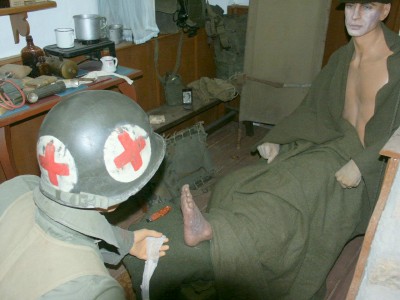 Diorama in the Truschbaum Museum, Camp Elsenborn, Belgium. (Photo used by permission.) Medic treating GI with trench foot and cold injuries to his hands and face. This illustrates what Felix might have suffered. |
|